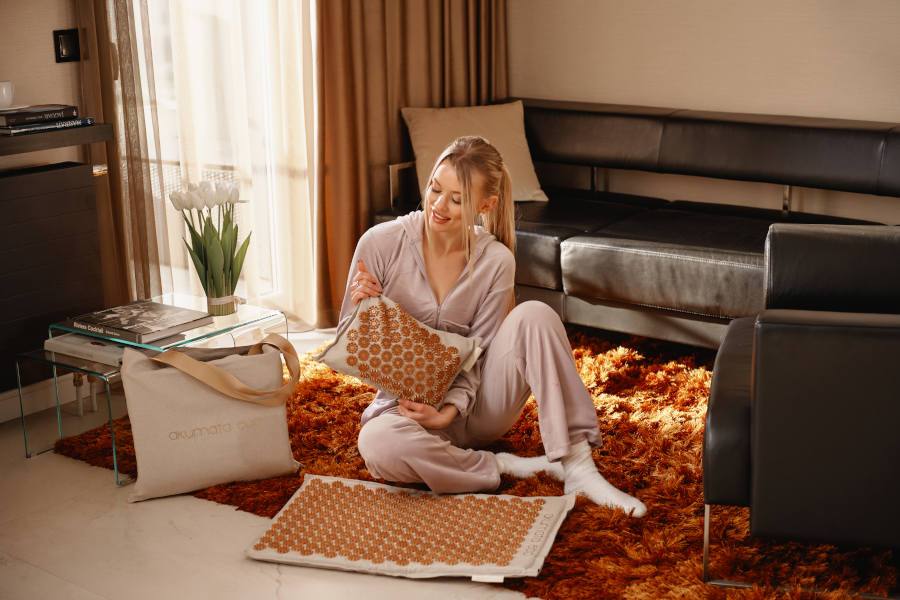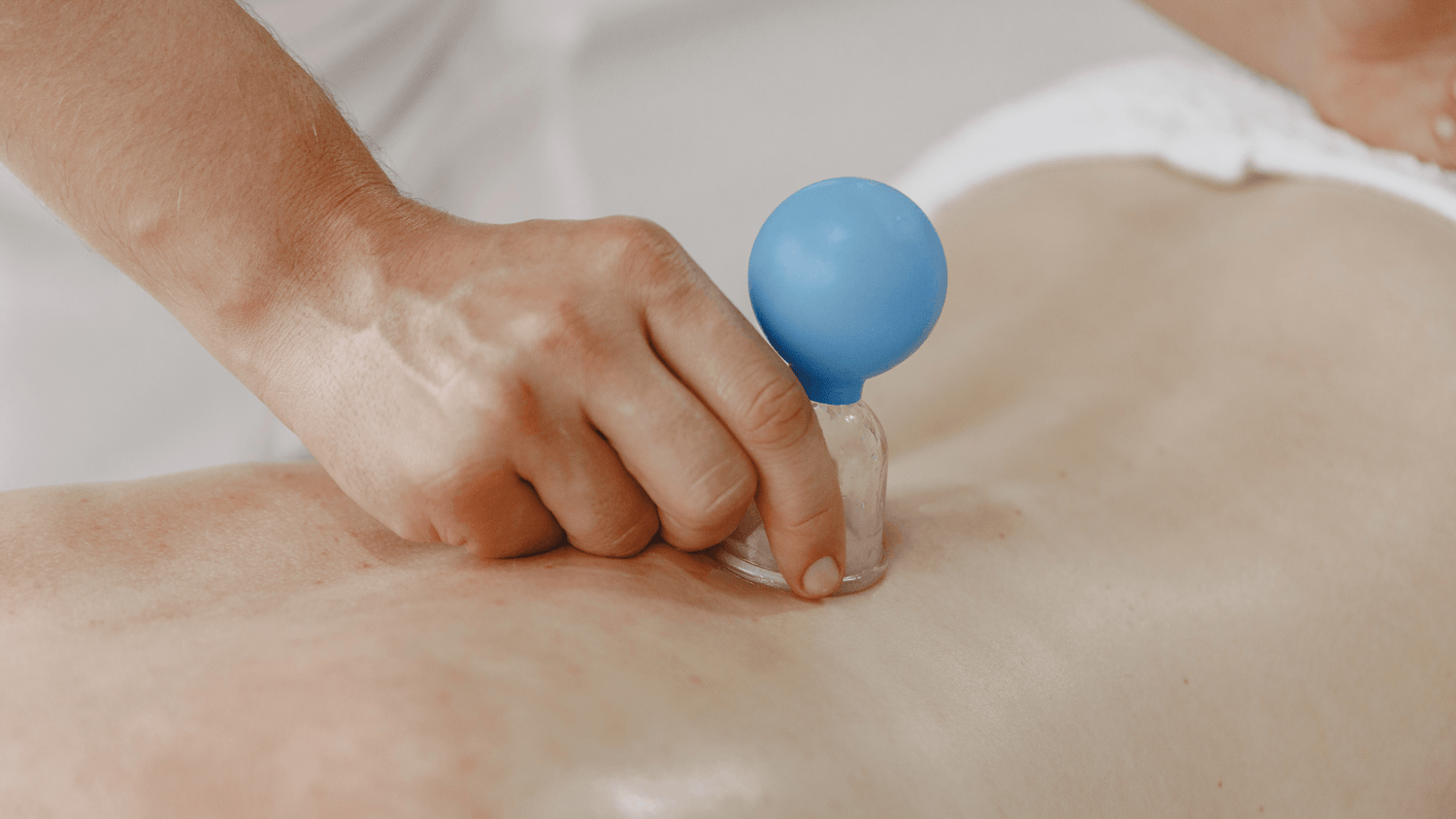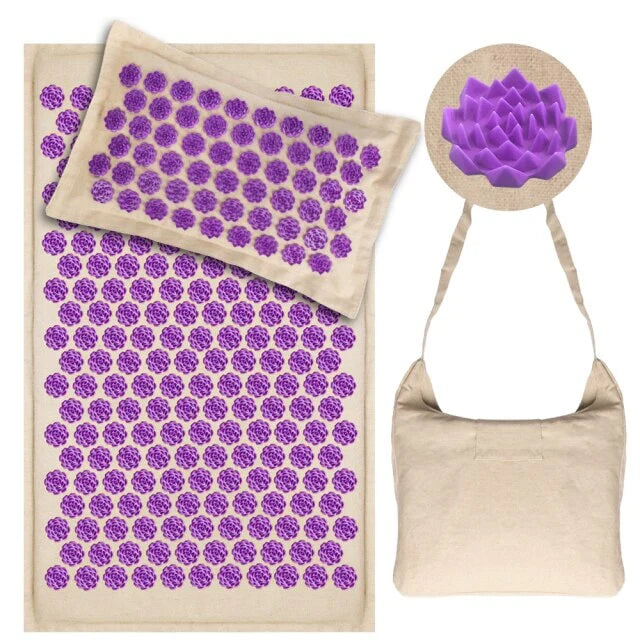Cupping is an ancient form of Chinese massage which, in recent years, has become increasingly popular in Europe. But what exactly is cupping massage?
What are the effects and benefits of cupping massage? What are massage cups? In this article, we explain everything you need to know about cupping massage!
What is cupping massage?
A cupping massage is one in which glass, silicone or other suction cups are used. These cups, also known as cupping, are placed on the skin to draw out the vacuum.
This vacuum can be obtained in a variety of ways, using a pump for example. Vacuum suction draws the skin and subcutaneous tissue up into the cup.
This significantly increases blood flow to the treated area. These suction cups can also be used to release tension in connective tissue.
Do I need to move the massage cups?
There are several ways to perform a cupping massage. For example, you can leave the cups on the skin. It is also possible to move the cups while they are being sucked in. For this method, however, you'll need to use massage oil.
Why do round red spots appear?
After a cupping massage, you'll often see round, red spots on the treated area. These spots may even turn blue.
This is because the blood flow in the area has been strongly stimulated by the vacuum in the cups. The extent of these red spots depends on the intensity and method of the cupping massage.
What is the origin of cupping massage?
Cupping is an ancient healing method. Cupping was practiced in East Asia as early as 3000 BC. Cups were heated and placed on the skin to draw out the vacuum. Cupping was also practiced in Saudi Arabia.
It was here, in particular, that wet cupping was used, first by making incisions in the skin. By sucking the skin into a vacuum, the "bad" blood was extracted from the body.
But cupping was also practiced in the Netherlands in the Middle Ages. There, too, cupping was seen as a "bloodletting" and part of the healing process.
When to offer a cupping massage?
A cupping massage can be a massage in its own right. But cupping massage can also be performed as part of another type of massage, such as a sports massage, a complaint massage or a connective tissue massage.
Cupping can be used to reduce pain. But a cupping massage is also recommended to enhance recovery after sport.
There is a growing demand for cupping massage. So offering cupping massage can be a great extension of your massage practice!
More and more people are also practicing cupping massage at home, particularly to combat the appearance of cellulite.
When should a cupping massage be offered?
A cupping massage can have a positive effect in many areas. It is therefore used to treat a variety of aches and pains. Among other things, a cupping massage can be highly effective for:
- Neck pain
- Headache
- Shoulder pain
- Back pain
- Arm pain
- Muscle pain
- Fighting cellulite
- Adhesions in connective tissue and related complaints
- Scar treatment (old scars)
- Fibromyalgia
- Striae
- Facial wrinkles
- Clearing energy blockages
- What is cupping used for?
Cupping has a significant effect on the skin and connective tissue. Cupping massage is also used to promote muscle recovery. In holistic massages, cupping is used to eliminate energy blockages.
Cupping has an important effect on connective tissue. In the case of pain caused by adherent connective tissue, a number of cupping massages are recommended. Cupping can also be very useful for recurring or long-standing problems.
In the case of long-term complaints, the connective tissue adapts and becomes tighter and stiffer, thus sustaining the complaints. Intensive loosening of connective tissue with suction cups can break this cycle.
In the case of muscular problems, cupping can also provide added value. The vacuum of the cups stimulates blood circulation in a highly localized area.
This stimulates the body to eliminate waste and supply nutrients. This speeds up recovery.
What types of suction cups are there?
There are different types of cup to use for cupping massage.The choice of cup shape is a matter of personal preference. All types of suction cup have their advantages and disadvantages. We present the different types of suction cups below.
Silicone massage cups are commonly used suction cups.This is usually the type of cup you use when you start giving suction cup massages, as they are very easy to use.
By squeezing the cups and placing them on the skin, suction is created. You don't need any additional accessories to use them.
Another advantage of silicone massage cups is that they are unbreakable.The suction cups are made of thick, long-lasting silicone.
It's important to keep these silicone massage cups clean in the right way to prevent them from becoming sticky.
Another advantage: silicone massage cups are much less expensive than glass massage cups.
Anti-cellulite massage cups are shaped differently from "normal" silicone cups. An anti-cellulite cupping massage is performed by moving the cups in such a way as to create suction on the skin.
Thanks to the special shape of the anti-cellulite massage cups, it's easier to make the suction more effective.
Anti-cellulite massage cups
Anti-cellulite massage suction cups are shaped differently from "normal" silicone suction cups. An anti-cellulite cupping massage is performed by moving the suction cups in such a way as to create suction on the skin.
Thanks to the special shape of the anti-cellulite massage cups, it's easier to make the suction more intense.These cups also hold their position well, even when covered with massage oil.
These days, it's becoming increasingly popular to use suction cups on oneself. More and more people are aware of this, particularly in the fight against cellulite. In response, many manufacturers offer special anti-cellulite massage cups for use at home.
These are also made of silicone, but are generally softer and less resistant than professional silicone anti-cellulite massage cups. These home anti-cellulite massage cups often come in cheerful colors or crazy shapes.
Glass suction cups with ball work in a different way. By pressing the ball and then placing the suction pad on the skin, a vacuum is created in the cup. Glass suction cups with a ball look more luxurious than silicone suction cups.
The cup retains its shape, which is a big difference from softer silicone cups. It is also possible to make suction more intense with glass cups than with silicone cups.
The use of glass suction cups is recommended for customers who are already accustomed to the practice of suction massage.
The disadvantage of glass cups is that they can break if dropped. They are hand-blown glass, which explains why they are more expensive than standard silicone massage cups.
Glass massage cups (fire-pressed)
Stamping fire massage cups are made of glass, but unlike glass cups with a ball, they don't have a ball with which suction can be created.
With fire suction cups, the vacuum is created by lighting a fire (usually by lighting an alcohol-soaked cotton ball) in the suction cup for a short time, then quickly placing it on the skin.
The difference with other suction cups is that the skin warms up because the suction cups are hot. The disadvantage of this method is that the intensity of the vacuum is difficult to regulate.
Massage suction pads with pump
Suction cups with pump are generally made of hard polycarbonate. These massage cups are like glass cups, but they retain their shape, unlike soft silicone cups.
Cups with pump are used directly on the skin. Thanks to the pump, you can create a vacuum. The use of suction cups with a pump is not recommended if you are starting to give suction massages.
It's a method that requires prior knowledge and/or training. The advantage of polycarbonate suction cups with pump over glass suction cups is that polycarbonate suction cups are unbreakable.
Suction cups for the face are also available.
These cups have a different shape to conventional massage suction cups, as they have a smaller diameter. The shape of these cups, specially adapted to the face, also means that the intensity of suction is a little lower.
This intensity can also be better controlled, so that the work can be carried out more precisely. Because of the sensitivity of the skin and the thinner layer of connective tissue on the face, it is important to use special suction cups for the face.
As these suction cups use less suction, they generally do not leave red marks like other suction cups.
What types of cupping massage are there?
There are different types of cupping massage. There's a big difference between dry and wet cupping. In the latter, small incisions are made in the skin before the suction pad is placed.
There are also cupping massages, for example, specially adapted for cellulite, facials or connective tissue problems. Cupping is also recommended for scars and stretch marks.
Cupping massage for cellulite
Cellulite, also known as orange peel skin, appears when the quantity of fat cells in the subcutaneous connective tissue increases. This reduces blood flow and waste accumulates.
This causes pitting in the subcutaneous connective tissue. Cellulite can be reduced with cupping massage.
This is mainly achieved by moving the suction cups over the skin. Cupping lifts the skin and improves blood circulation in the subcutaneous connective tissue, helping to reduce hollows in the skin.
Facial cupping massage
Cupping massage can also be used on the face. Special suction cups are available for this purpose. These suction cups have a different shape to standard suction cups.
With these facial suction cups, the vacuum pressure is less intense. The special shape also makes it easier to regulate intensity. Facial cupping is used to reduce wrinkles and improve skin tone.
It is also used for deep pore cleansing. As a result, facial cupping is becoming increasingly popular with beauticians.
Cupping connective tissue
Adhesions in connective tissue can cause a variety of aches and pains. Not only locally, but also in the form of radiating pain. As a masseur, you know all about this. Pain can also be sustained by connective tissue problems.
These long-term problems can be treated very effectively with cupping massage. Cupping loosens the connective tissue, so to speak, which increases blood circulation and allows everything to flow better again.
Leg cupping massage
Cupping is frequently used on the legs. Cupping can be used for a variety of purposes. The cellulite mentioned above is often present on the legs and can be reduced by cupping.
But cupping can also help heal muscle injuries. Cupping can also have a beneficial effect on long-standing, recurring muscle pain in the calf, for example.
Back massage with cupping can target back muscles. By locally increasing blood flow, muscles are more lubricated and relax more easily. But cupping can also be used very effectively on the reflex zones of the back.
Every part of the body (organs, bones, muscles) is controlled by nerves, and each nerve originates in the spinal column. Prolonged pain anywhere in the body therefore affects the connective tissue of the back. These connective tissue adhesions can ensure that the pain is maintained.
Cupping helps to loosen these areas of connective tissue. In this way, the vicious circle is broken and the body can recover.
Cupping massage for scars and stretch marks
Cupping can also help reduce scars and stretch marks. In these areas, local blood circulation is lower than normal. By performing a cupping massage on scars and stretch marks, blood circulation is strongly stimulated.
This reduces the visibility of scars and stretch marks. Be careful not to use cupping on recent scars, but only on scars that have been present for some time.
Wet cupping massage
The above methods are dry cupping. Wet cupping is also available. Wet cupping is a name given to methods in which, before the suction cups are placed, cuts or holes are made in the skin.
An example of wet cupping is Hijama massage (Hijama means "to suck" in Arabic). By sucking the cups onto the damaged skin, the blood rises. This is believed to eliminate impure or bad blood and help resolve various illnesses.
Tips for cupping in your massage studio
Would you like to offer cupping massage? Then please read this article, where we offer a few tips to get you started with this new practice.
Choosing the right suction pads
We've listed the characteristics of the different types of suction cups above. If you're new to cupping massage, we recommend you start with silicone cups for their ease of use.
However, if you also wish to offer facial cupping massage, make sure you have special suction cups.
Cleaning your massage cups
It's important to clean your cups properly after use. Not only for good hygiene, but also so that you can use your suction cups for as long as possible.
It's best to clean the cups with lukewarm water and a mild detergent, such as washing-up liquid. Let them air-dry or use a clean, soft cloth. Although suction cups only come into contact with intact skin when dry, it is advisable to disinfect them after cleaning.
If you have silicone or polycarbonate cups, make sure the disinfectant does not contain alcohol. This will dry out your cups. Don't put them in the dishwasher either.
What massage oil should I use for a cupping massage?
As we've already mentioned, you can perform a cupping massage by placing the suction cups on your body and leaving them there. So you don't need massage oil.
Do you want to be able to move the cups easily, for example to treat a larger area or for an anti-cellulite massage? Then you'll need a massage oil made from natural ingredients.
Choose a massage oil that suits the effect you want to achieve. Are you doing a cupping massage to relax your muscles?
Then choose massage oil for athletes, for example. For facial cupping, choose the special facial massage oil.
Tip for cupping in combination with connective tissue massage
We have another quick tip if you want to combine connective tissue massage with cupping. We recommend starting with connective tissue massage. This is an intensive massage without the use of oil.
With cupping massage, you use massage oil (when you move the cups). So it's more convenient to start with the connective tissue massage and finish with the cupping.
What do you need for a cupping massage?
To perform a cupping massage, you need a number of things. Of course, you need the cups. Earlier in this blog, we talked at length about the cups that are available.
Depending on the cups you choose, you'll also need certain accessories, like a pump. You'll also need a good natural massage oil to help the cups glide over the skin. A massage table is also essential for cupping massage.
This gives the masseur good access and ensures that the client is relaxed. We've already written a detailed blog on what you need in your massage practice, which you can find right here.
Do I need training to offer cupping massage?
It's advisable to undergo training if you want to start offering cupping massages. In a training course, you'll learn all you need to know about cupping and the intensity with which you should work with it.
To be as professional as possible and know what you're doing, it's advisable to take a cupping massage course.
Training is essential, especially if you're using a suction cup with a pump. Here, the suction can become so strong that you need to know what you're doing.
Risks of cupping massage
Cupping involves risks. When using a wet suction pad, the risks are even greater. There is, for example, a risk of infection due to damaged skin.
There are also risks associated with dry cupping. It's possible that if the suction power is too high and too often applied to the same spot, the tissue may die. So be careful and know what you're doing when you perform a cupping massage.
Contraindications to cupping massage
There are a few contraindications to cupping.
When you take a cupping massage training course, you'll learn all about the contraindications to cupping. Here are a few examples of contraindications:
- Fever
- Infectious diseases
- Use of anticoagulants
- Pregnancy
- Blood disorders
- Varicose veins
In conclusion
Cupping massage is becoming increasingly popular with clients, so it's a great specialty to add to your practice!








